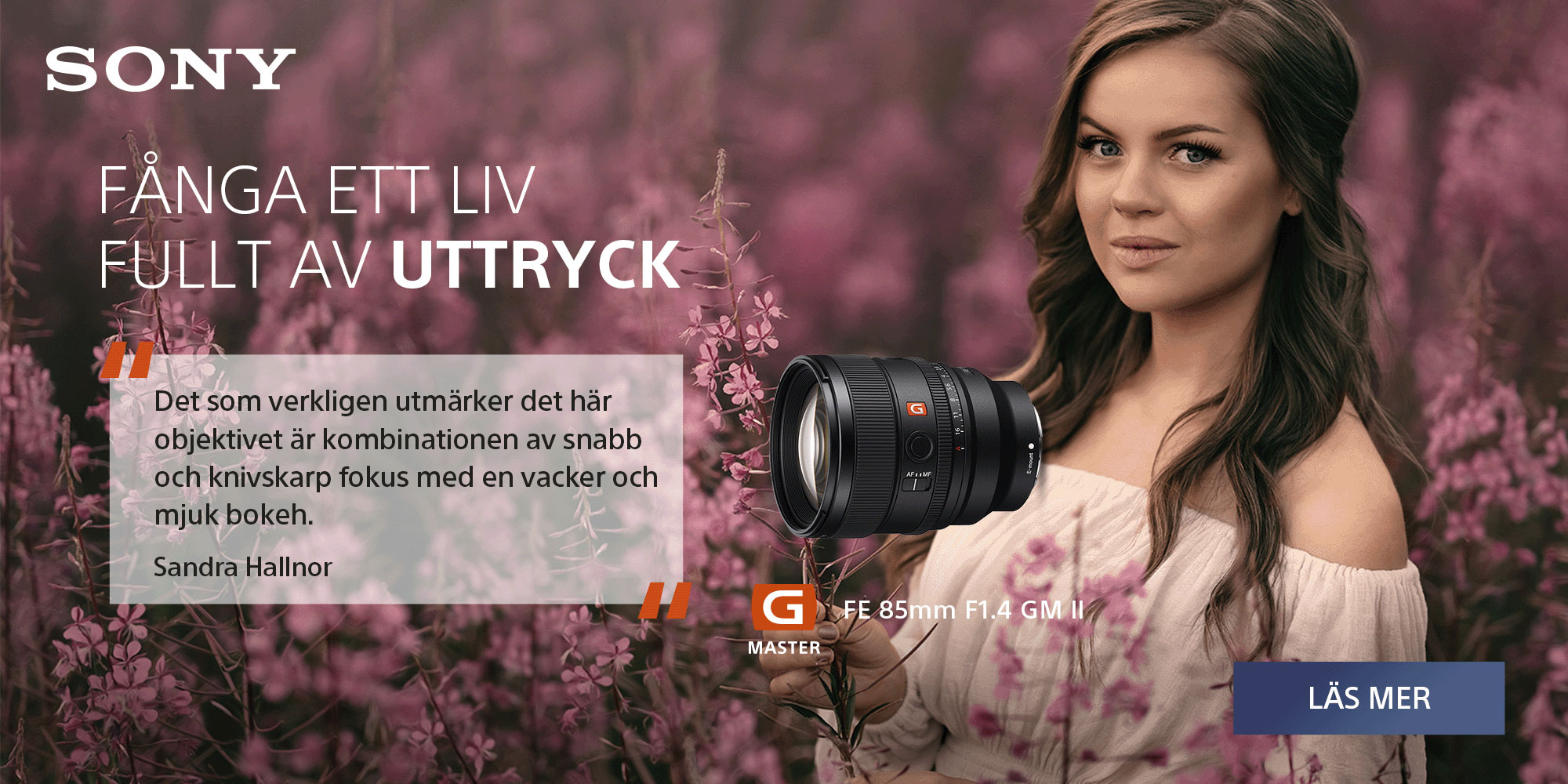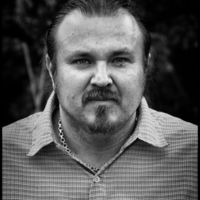"Måla med ljus"
The Village that doesn't exist
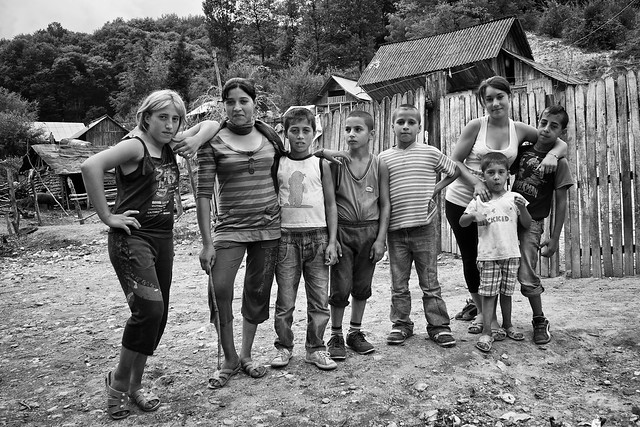
Follow me to three small Romanian villages in the Pauleasca area from where many of the EU migrants that begs on the streets in the Swedish towns Jönköping, Linköping and Stockholm come from. Pauleasca consists of the villages, Troislav, Tinca and Tufanu and about 4000 persons live in the area.
The people in Pauleasca were given land to live on by the communist regime in the late 1940s. But after the Romanian revolution in late 1989 most of the old documents from the communist era wasn't valid anymore and the vast majority of the houses in the area was considered to be illegal settlements. Today Pauleasca doesn't even exist on official Romanian maps. They are not longer allowed to travel on main roads with horse and carriage due to governmental restrictions. They are not longer allowed to pick branches of willow and birch In their nearby woods to make traditional handicraft like baskets and broom that they can sell on the local market. Since 2012 is begging illegal in Romania.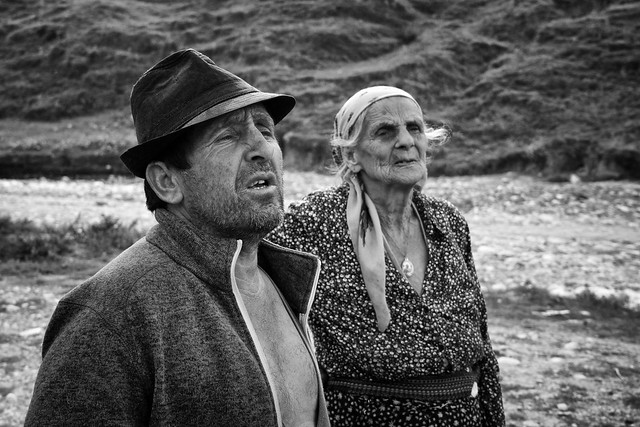
All those new restrictions paired with a unemployment rate of nearly 80 percent has created a desperate job migration to richer countries in the northern parts of the European Union. Most of the rudari and romani that migrate don't find a work and end up begging for money on the streets in their new countries to be able to support their families back home. The migration from areas like Pauleasca is not a cosmopolitan aspiration towards new horizons, it springs from a desperate struggle for survival for a minority that has been subjected for indifference, discrimination, hostility and racism from the state and ethnic romanians for years and years.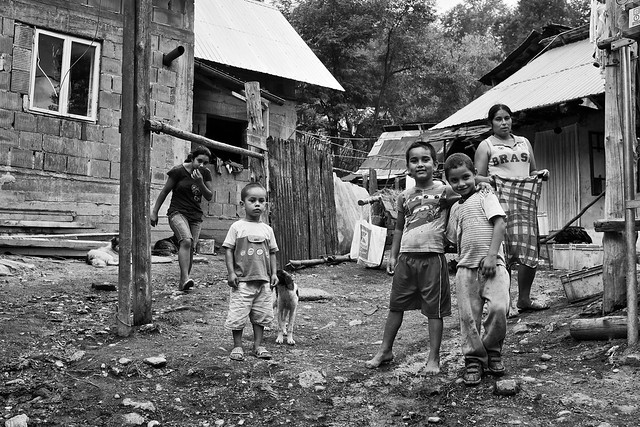
The people in the pictures belong to the rudari minority. Even if they live in Europe their living conditions are down to the same poverty level as people living in third world countries. They have substandard housing. Their life expectancy is 13 years shorter than the average Romanian. They lack running water, proper kitchen, bathroom and toilet. Many of the adults are illiterate but most kids are now in school from grades 1-4. Their food is deficient and many children suffer from malnutrition. Even if the future for the people in the area seems to be painted in dark colours I believe a change is gonna come.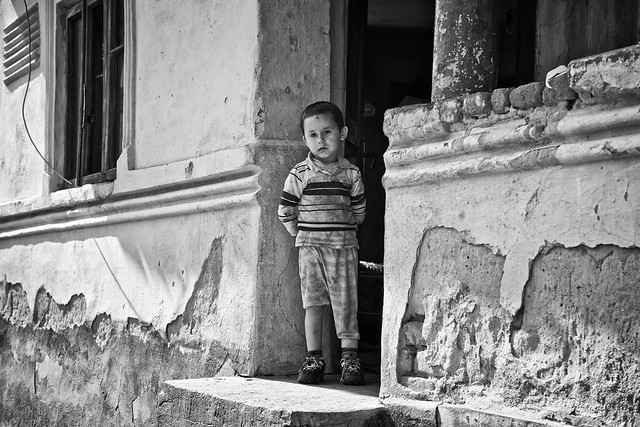
Click the following link if you cant see the Slide-Show on your phone or tablet: www.flickr.com/photos/chasid68/sets/72157649562924582/
Text and Photo: Mikael Good
Opre Roma - Roma Arise!
Roma are the largest and most discriminated minority in Europe. Their level of education is lower than other Europeans. Their health is poorer, their unemployment rate is higher and their life expectancy are shorter than for other Europeans. The history of Roma in Europe is dark and through the ages they have been subjected to racial hatred and outright extermination.
The last two years Sweden and other rich countries in northern Europe has been subjected for a desperate migration from extremely poor Roma people from Bulgaria and Romania. They have no other solution than to go to Sweden hoping to find a work and get money to pay their debts and feed their hungry children. Within the European Union it's allowed for the citizens to stay up to 3 months in another EU country without work and up to 6 months if you have a work.
Although Roma people has been subjected to persecution and oppression for generations in Europe, they are a happy people as you can see in the slide-show. Despite all the difficulties they have been through, they are always close to a good laugh. Joy and music welds them together and it has become a way for them to escape from all the hatred and oppression that they are constantly subjected to.
The Roma mothers and fathers in the pictures came to Sweden with the hope of getting work. Most of them did not find work, and they had to beg on the streets to raise money for themselves and their children back in Romania. I didn't want to photograph them in the vulnerable position when they were begging on the streets. I decided to meet them in their camp. I wanted to get to know them and build relations with them in order to photograph them at their own terms. Therefore I have spent much time getting to know them at the place were they have set up their camp in Huskvarna. If possible I shall visit them in their villages in Romania and meet them and their children and grandchildren in their own environment.
The song in the slide-show is a traditional Gypsy song from Romania which is played by the Roma master musicians Catalin Vlad (guitar) and Stefanica Gheorghe (chello). The photos in the Slide Show has been taken by the Swedish Photojournalist and Social Reporter Mikael Good from Sweden and he has used a Leica M rangefinder camera for many of the pictures.
Ederlezi - Romano dive, amaro dive (Full HD): https://www.youtube.com/watch?v=28S0kpDfJ04
I Believe A Change Is Gonna Come - Opre Roma!
Text and Photo: Mikael Good
Ps: The daughter to one of my all time favorite documentary photographers saw the slide-show and she liked it! :)
That's How You Change The World

"Photography isn't a way to get famous. Photography is a way to change the world!" - Mikael Good, Photojournalist & Reporter
Ingen kan hjälpa alla, men alla kan hjälpa någon!

En östgötsk givare fick nys om det rudariska tiggarparet Petres och Consuelas svåra situation och bestämde sig för att vara med och förändra deras liv. Tillsammans med en arbetskamrat som kan rumänska hade jag ett spännande lunchmöte över en talrik linssoppa med dem i Johanneskyrkan i Linköping i måndags. Ett par timmar senare skulle de sätta sig på bussen hem till Rumänien och lämna tiggeriet bakom sig.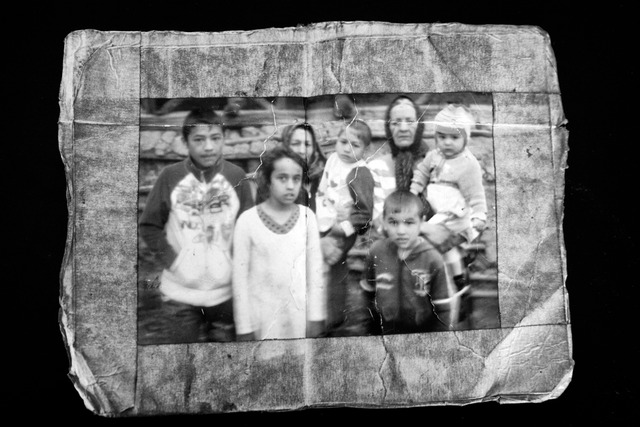
- Det här är mina barn, min mamma och jag säger Consuela och visar mig ett vältummat kort som hon förvarar i fickan närmast hjärtat.
Concuela har inte träffat sina älskade barn på över en månad och hon ska springa dem till mötes och omfamna dem alla på en och samma och hon vet med sig att hennes skratt kommer att blandas med många glädjetårar.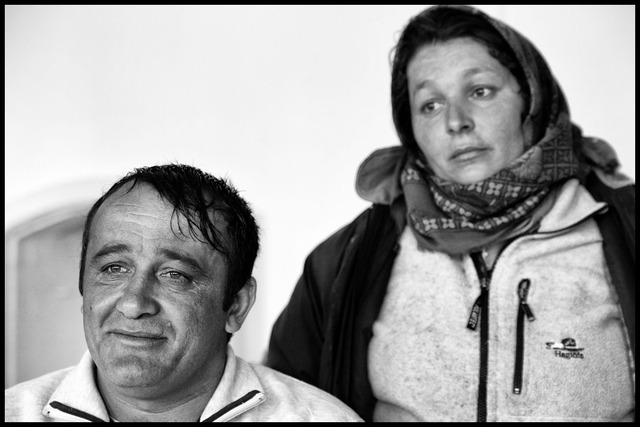
Med sig i bagaget från Sverige har de en motsåg som de har fått från Hjärta till Hjärta i Linköping. Med den kommer Petre att kunna försörja sin familj. Om ett par veckor kommer de att få pengar till en häst och vagn, pengarna har de fått från en östgötsk givare som blev rörd över familjens situation. När Petre förstod att någon annan människa ville göra en sådan välgärning mot hans familj utbrast han glatt:
– Då ska vi genast åka hem till Rumänien, jag vill inte tigga en minut till nu när jag kan försörja mig själv.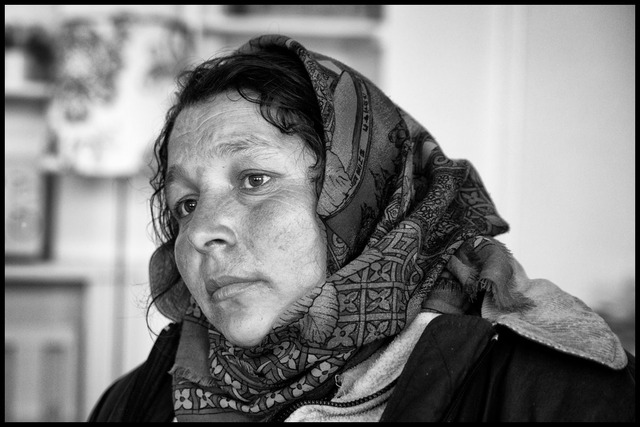
Om ett par timmar kommer bussen från Sverige fram till Rumänien och Petre och Consuela kommer antagligen aldrig att behöva sätta sig i ett gathörn och tigga i ett främmande land igen.
Jag kommer att publicera ett längre reportage om Petre och Consuela i min blogg framöver. Klicka på inlägget nedan om du vill läsa en längre artikel om hur man kan påverka fattiga romer, rudari och rumäners situation i Rumänien:
Les Grands Moments: Tittar du också bort? http://t.co/6fqHc6NVFw #Tiggare #Tiggeri #Romer #Rudari #allafårplats
— Mikael Good (@Chasid_68) April 25, 2014
Text och foto: Mikael Good
Gheorghe - Mannen bakom tiggarmyten

När vi svenskar möter okända människor som vi inte riktigt förstår oss på eller kan kommunicera med bygger vi gärna upp myter om dem. I och med att de flesta av oss inte kan prata med tiggarna sprids det många myter om dem. En av myterna är att organiserade ligor tar hand om pengarna som de tigger ihop. Men enligt polisen, socialförvaltningen och de många frivilligorganisationerna som arbetar mot tiggarna i kommuner runt om i landet finns det inte ett enda fall som kan bevisa att myten stämmer.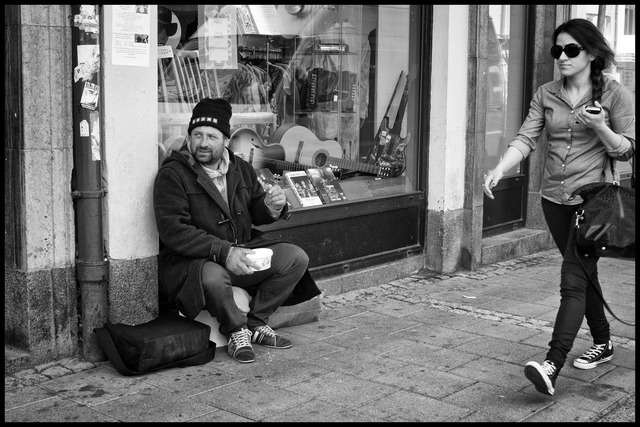
Mannen på bilden heter Gheorghe han är i 30-årsåldern och kommer från den lilla byn Malu Vanat som ligger drygt 15 mil från huvudstaden Bukarest i Rumänien. 100 av EU-migranterna som tigger i och kring Stockholm kommer från hans hemby. De flesta EU-migranterna som avhystes från tältlägret i Högdalen i februari kom från Malu Vanat. Gheorghe och många av dem som bor i byn tillhör minoritetsfolket Rudari som ibland felaktigt kallas för romer. Ingen vet bestämt varifrån de kommer men till utseende och traditioner har de många likheter med stäppfolket Kazarerna som levde i området mellan Svarta havet och Kaspiska havet mellan år 600-900.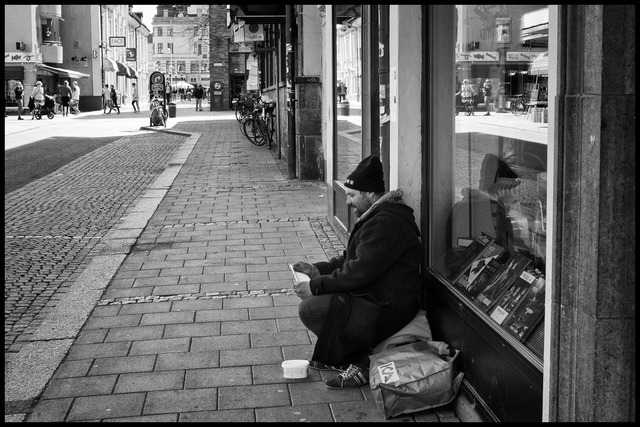
Gheorghe kom till Sverige med en förhoppning om att få tag på ett arbete inom jord- eller skogsbruket. Men hur han än försökte fick han inte tag i något arbete. Gheorghe vill inget hellre än att arbeta och göra rätt för sig. Att han bara kan Rumänska och varken kan läsa eller skriva har satt ordentliga käppar i hjulet för honom och till fann han ingen annan utväg än att sätta sig på gatan och tigga ihop pengar. De flesta pengarna som Gheorghe tigger ihop skickar han hem till sin fru och sina barn i Malu Vanat. De övriga pengarna sparar han ihop till returbiljetten. Härbärget som han tidigare bodde på stängde för ett par veckor sedan och nu bor han tillsammans med några andra tiggare i en park .
TT reportern Helena Ekinge har tillsammans med personal från hjälporganisationen Hjärta till Hjärta i Rumänien besökt Gheorghes hemby Malu Vanat och intervjuat Ioana Marantzelu som har livnärt sig som tiggare i Sverige. Reportage med rubriken: "Tiggeri i Sverige föder romsk by" hittar du här: http://www.metro.se/nyheter/tiggeri-i-sverige-foder-romsk-by/EVHndi!MjH4Yf99sKwU/
ABC-Nyheter har också varit på plats i Gheorghes hemby och gjort ett reportage med rubriken. "Bostäderns rivs - både i Stockholm och Rumänien: http://www.svt.se/nyheter/regionalt/abc/bostaderna-rivs-bade-i-stockholm-och-rumanien
Les Grands Moments: Tittar du också bort? http://t.co/6fqHc6NVFw #Tiggare #Tiggeri #Romer #Rudari #allafårplats
— Mikael Good (@Chasid_68) April 25, 2014
Text och foto: Mikael Good
